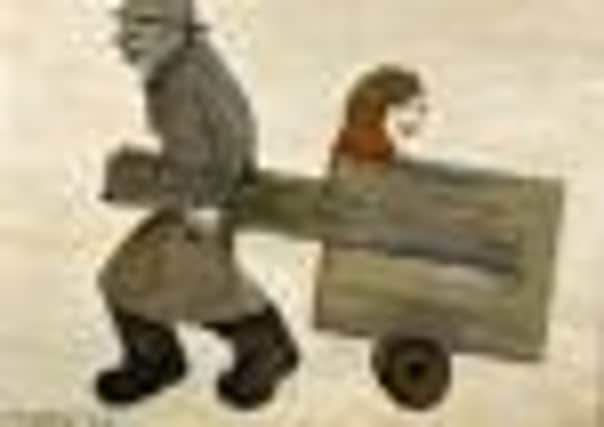Figures add up


IT was hardly the ringing endorsement a son might expect from his mum, especially one who depended on him as she lay bedridden for the last eight years of her life. “A minor aberration” was how Elizabeth Lowry described the artwork of Laurence Stephen, who juggled his duties as carer with those of rent collector for the Pall Mall Property Company in Manchester.
Lowry – always referred to by his initials, LS – ignored the insults of both his mother and the critics, ploughing on with those gritty, Northern scenes dotted with trademark “matchstick” figures. His deliberately naive paintings, of course, made him one of Britain’s most famous and easily recognised artists, with some of his work nowadays fetching six, occasionally seven, figures
Advertisement
Hide AdAdvertisement
Hide AdDuring his working life, however, Lowry kept quiet about his day job in case people would think of him as a “Sunday painter”. He was furious in 1933 when a newspaper revealed that he was a rent collector.
Now two Lowry paintings are among a collection from the estate of an unnamed Harrogate family to appear at local auctioneers Morphets on September 8. Man Posting a Letter, dated 1965, is expected to fetch £160,000-£200,000, while Man With a Cart (1963), is estimated at £50,000-£70 000.
The consignment of the pictures represents a coup for Morphets, who are selling two by Helen Bradley from the same collection – The Library (£25,000-£30,000) and Christmas Tea at Grandmother’s (£15,000-£20,000), as well as eight works from other clients by another popular Northern artist, Brian Shields.
Back to LS Lowry. Collectors were not paying serious money until the 1990s when a painting depicting Piccadilly Circus in London made a record £562,000, only to be eclipsed by the £1,926,500 paid by the Professional Football Association in 1999 for Going To The Match, showing a huge crowd heading for a game at Bolton.
Advertisement
Hide AdAdvertisement
Hide AdI remember Gordon Taylor, of the PFA, telling me afterwards that he thought he had got a bargain. I scoffed at the time, but recently, a similar picture, The Football Match, from 1949, proved him right by fetching £5.6m, just 60 years after it was bought for £250.